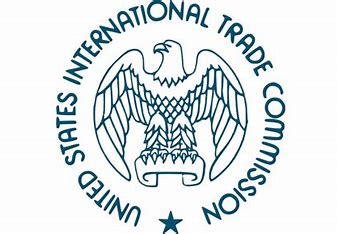Despite the growth of users, tight margins and strong pressure on services suppliers will harm the business
01/26/2023

The health insurance market is expected to reach 51.5 million users this year — a historical level in the sector. The highest number so far was in December 2014, when there were 50.5 million people with health insurance in Brazil. However, even with this growth, which began with the outbreak of the pandemic, the healthcare industry is likely to have another difficult year, with tight margins and strong pressure on operators, hospitals, clinics, medical diagnosis labs, and clients of health insurance plans when it comes to raising prices.
In nine months of 2022, health insurance companies (not including dental care) reported a net loss of R$3.4 billion. The loss ratio in September was a record at 93.1%. “We estimate that the operators will return to positive profitability in 2024. This year, we expect a stabilization in the fall, considering that the adjustment in 2022 was positive rather than in 2021,” said Renato Casarotti, president of Abrange, a trade association that made the studies to project the number of health insurance users for this year.
According to projections from Citi and BTG, individual plans, a reference for other contracts, is expected to be adjusted by 10%. Citi questions whether the percentage is sufficient to cover the medical expenses of 2022.
This increase in the number of health insurance plans in the country is driven by users who buy products with lower tickets that, in turn, are not compensating for the high medical costs. The consequence is pressure on the entire healthcare chain. Last year, many hospitals and laboratories had difficulties in passing on their new medical service price lists to the operators.
“So, 2023 is likely to be another year of strong competition. We expect a challenging year for the healthcare industry, with higher risks for operators due to even worse loss rates, the need for prices above inflation, and a weaker growth scenario concerning beneficiaries,” said Bank of America (BofA) in a report.
The BofA team, led by Fred Mendes, also recalled that the unemployment rate is at 8.7% and, therefore, the general growth of beneficiaries should be lower than in 2022. According to Abrange’s projections, this year’s growth will actually be lower, with the entrance of 1.1 million new users, compared with 1.5 million last year.
Given this scenario, the analysts that follow the sector have reduced their growth expectations for practically all the listed healthcare companies. The price target projected for this year for 10 of the 11 companies linked to healthcare plans, hospitals, and medical diagnosis was reduced. The only exception was OdontoPrev, which operates in a segment with a low loss ratio.
This reduction in the target price was followed in several cases by a change in the recommendation of the stock. Last year, analysts indicated buying stocks of almost all healthcare companies. In the review of this beginning of the year, many analysts are recommending only holding the stock.
New projections on what the prices will be in December come on top of low prices, as healthcare stocks plummeted last year.
The biggest devaluations were faced by Kora (84.97%), Qualicorp (64.56%), Dasa (58.07%), Hapvida (51.06%), Oncoclínicas (46.4%), Mater Dei (46.19%), Rede D’Or (33.33%), and OdontoPrev (18.92%). Right after comes SulAmérica, which joined Rede D’Or, with a drop of 18.86%. Among the public companies, Fleury is the one with the least losses, with a devaluation of 8%. Hermes Pardini, which announced a merger with Fleury, had gains of 13.6%. Finally, Alliar shares rose 44.29% due to the sale of the company’s controlling group, whose shareholders established a price premium to get rid of their shares.
Itaú BBA argued in its report that it is taking a more cautious approach to the sector given the uncertainties surrounding growth, profitability, and high capital costs for longer than initially thought. In addition, in the bank’s view, investors are giving less benefit of the doubt to long-term projects and prefer to look more to the short term.
“Health insurance companies are under pressure. To deal with the current situation, they are increasing write-offs, lengthening payment terms, and adjusting prices below inflation. The measures affect revenue, margins, and the cash conversion cycle of service providers,” said XP.
According to Lígia Bahia, a physician and professor at the Federal University of Rio de Janeiro (UFRJ), the current scenario marked by tight margins and fierce competition tends to set back the project of making the sector more integrated – a recurrent discourse before the pandemic. In this health market, there is a dichotomy: operators win when hospitals lose and vice-versa, generating extremely conflicting relationships. “Today we live a dynamic of growth with lower returns. Today, it’s each one looking out for itself, for its own demands,” Ms. Bahia said.
In her view, another reflection of the current moment is the reduction in the coverage of health plans – a movement that has been occurring, even in health plans with higher ticket prices.
Asked about the negative performance of the operators and the impacts on the chain, the National Agency of Supplementary Health (ANS) informed that it is attentive to the results of the operators, but pondered that the data published so far are partial, referring to the first nine months of 2022. “Only after the accounting evaluation will it be possible to say if 2022 was a year of profit or loss for the sector.”
The ANS also highlighted that it has adopted measures such as the approval of new regulatory capital rules that will generate an estimated financial impact, based on second-quarter data, of around R$9 billion, compared to the current requirement. “It is important to emphasize that these changes do not in any way diminish the sector’s security, on the contrary, the idea is to cover market risks with the lowest possible barriers for operators.”
*By Beth Koike — São Paulo
Source: Valor International

/i.s3.glbimg.com/v1/AUTH_37554604729d4b2f9f3eb9ad8a691345/internal_photos/bs/2023/k/u/VWbjfkSBOMypIpgNh1EA/cafe-divulgacao-faf.png)
/i.s3.glbimg.com/v1/AUTH_37554604729d4b2f9f3eb9ad8a691345/internal_photos/bs/2023/9/h/OvisSKTHWIh2KPlqQk3w/190123hughes28.jpg)
/i.s3.glbimg.com/v1/AUTH_37554604729d4b2f9f3eb9ad8a691345/internal_photos/bs/2023/J/z/oQGmnCRyGZtjUrMdXYcA/394959226.jpg)

/i.s3.glbimg.com/v1/AUTH_37554604729d4b2f9f3eb9ad8a691345/internal_photos/bs/2023/z/Q/4wMbjOSWSeGXaGJjz8Ng/24emp-100-cvm-b1-img01.jpg)
/i.s3.glbimg.com/v1/AUTH_37554604729d4b2f9f3eb9ad8a691345/internal_photos/bs/2023/L/b/11VnEbRMazxvasm4bz1Q/23esp-100-timme-a14-img01.jpg)


/i.s3.glbimg.com/v1/AUTH_37554604729d4b2f9f3eb9ad8a691345/internal_photos/bs/2022/u/C/VhJ3leSOyO3zRPMTkr0A/desemprego-marcelo-camargo-abr.png)